Ultrasonic and Conventional Fatigue Endurance of Aeronautical Aluminum Alloy 7075-T6, with Artificial and Induced Pre-Corrosion
Abstract
1. Introduction
2. Materials and Methods
Experimental Set Up
3. Results
3.1. Fatigue Endurance under Ultrasonic and Conventional Techniques
3.2. Roughness Measurements on the Conventional Fatigue Testing Specimens
3.3. Microstructure of Crack Initiation and Propagation in Pre-Corroded Specimens and with Two Artificial Pits
3.4. Numeric Simulation of Stress Concentration
3.5. Numeric Determination of Stress Intensity Factor in Mode I
- Determination of stress and strain distributions on cracked structure;
- Evaluation of displacements vectors at the crack zone on the X direction, to calculate the stress intensity factor in mode I;
- Compute the direction (ϕ = 0 for all steps), of crack extension and the incremental crack surface construction;
- Compute the number of load cycles of last increment for crack growth simulation;
- Re-meshing of boundary, if necessary;
- Return to first point.
3.6. Evaluation of ΔKTH, for Base Material and Specimens with Two Hemispherical Pits in Transverse Direction
4. Discussion
5. Conclusions
- Ultrasonic fatigue tests were obtained on specimens of the aluminum alloy 7075-T6: base material, with two hemispherical pits and pre-corroded. In the case of conventional fatigue: base material and with two hemispherical pits;
- Pit orientation regarding the applied load plays an important role on the fatigue life of this aluminum alloy: fracture occurs first, for specimen with two transversal pits, following by specimens with longitudinal pits and pre-corroded specimens. The higher fatigue endurance corresponds to specimens of base material;
- Under conventional fatigue tests Ra roughness parameter slightly decreases in the direction of applied load after tests and slightly increases in perpendicular direction;
- Cracks initiate frequently associated with one or more pits for pre-corroded specimens and at the bottom of one or the two artificial pits. Crack propagation was always located across the specimen neck section, following a intergranular path;
- The stress concentration factor Kt, plays a principal role affecting fatigue endurance in the pre-corroded and two pits specimens; values of Kt were obtained by numeric simulation;
- Stress intensity factor in mode I was obtained by numeric evaluation using the displacement correlation method, from crack initiation to fracture;
- The stress intensity factor range threshold was obtained for the base material and for specimens with two hemispherical pits in transverse direction;
- Specimens with pre-corrosion and artificial pits present decrease of the number of fatigue cycles, inside the stable zone of crack growth;
- Additional physical and numeric investigations should be undertaken to assess the quantitative effects of pits in the corroded surfaces—particularly the interaction effects of close pits associated with the crack initiation and propagation.
Author Contributions
Funding
Acknowledgments
Conflicts of Interest
References
- Wanhill, R.J.H. Aerospace applications of aluminum-lithium alloys. In Aluminum-Lithium Alloys, Processing, Properties and Applications; Prasad, N.E., Gokhale, A.A., Wanhill, R.J.H., Eds.; Butterworth-Heinemann, Elsevier Inc.: Oxford, UK, 2013; pp. 503–535. [Google Scholar]
- Zhang, X.; Chen, Y.; Hu, J. Recent advances in the development of aerospace materials. Prog. Aerosp. Sci. 2018, 97, 22–34. [Google Scholar] [CrossRef]
- Jawalkar, C.S.; Kant, S.; Kaushik, Y. A Review on use of Aluminium Alloys in Aircraft Components. i-Manager’s J. Mater. Sci. 2015, 3, 33–38. [Google Scholar]
- Rambabu, P.; Eswara Prasad, N.; Kutumbarao, V.V.; Wanhill, R.J.H. Aluminium Alloys for Aerospace Applications. In Aerospace Materials and Material Technologies; Indian Institute of Metals Series; Springer: Singapore, 2016; pp. 29–52. [Google Scholar]
- Codaro, E.N.; Nakazato, R.Z.; Horovistiz, A.L.; Ribeiro, L.M.F.; Ribeiro, R.B.; Hein, L.D.O. An image analysis study of pit formation on TiÁ 6AlÁ 4V. Mater. Sci. Eng. 2002, 341, 202–210. [Google Scholar] [CrossRef]
- DuQuesnay, D.L.; Underhill, P.R.; Britt, H.J. Fatigue crack growth from corrosion damage in 7075-T6511 aluminium alloy under aircraft loading. Int. J. Fatigue 2003, 25, 371–377. [Google Scholar] [CrossRef]
- Jones, K.; Hoeppner, D.W. The interaction between pitting corrosion, grain boundaries, and constituent particles during corrosion fatigue of 7075-T6 aluminum alloy. Int. J. Fatigue 2009, 31, 686–692. [Google Scholar] [CrossRef]
- Molent, L. Managing airframe fatigue from corrosion pits—A proposal. Eng. Fract. Mech. 2015, 137, 12–25. [Google Scholar] [CrossRef]
- Wang, Q.Y.; Kawagoishi, N.; Chen, Q. Effect of pitting corrosion on very high cycle fatigue behavior. Scr. Mater. 2003, 49, 711–716. [Google Scholar] [CrossRef]
- Zuñiga Tello, I.F.; Domínguez Almaraz, G.M.; López Garza, V.; Guzmán Tapia, M. Numerical investigation of the stress concentration on 7075-T651 aluminum alloy with one or two hemispherical pits under uniaxial or biaxial loading. Adv. Eng. Softw. 2019, 131, 23–25. [Google Scholar] [CrossRef]
- Pao, P.S.; Gill, S.J.; Feng, C.R. On fatigue crack initiation from corrosion pits in 7075-T7351 aluminum alloy. Scr. Mater. 2000, 43, 391–396. [Google Scholar] [CrossRef]
- Stanzl-tschegg, S. Fatigue crack growth and thresholds at ultrasonic frequencies. Int. J. Fatigue 2006, 28, 1456–1464. [Google Scholar] [CrossRef]
- Domínguez Almaraz, G.M.; Ambriz, J.L.Á.; Cadenas Calderón, E. Fatigue endurance and crack propagation under rotating bending fatigue tests on aluminum alloy AISI 6063-T5 with controlled corrosion attack. Eng. Fract. Mech. 2012, 93, 119–131. [Google Scholar] [CrossRef]
- Deng, G.; Nagamoto, K.; Nakano, Y.; Nakanishi, T. Evaluation of the Effect of Surface Roughness on Crack Initiation Life; ICF12; Natural Resources Canada: Ottawa, ON, Canada, 2009; pp. 1–8. [Google Scholar]
- Singh, K.; Sadeghi, F.; Correns, M.; Blass, T. A microstructure based approach to model effects of surface roughness on tensile fatigue. Int. J. Fatigue 2019, 129, 105229. [Google Scholar] [CrossRef]
- Lai, J.; Huang, H.; Buising, W. Effects of microstructure and surface roughness on the fatigue strength of high-strength steels. Proc. Struct. Integr. 2016, 2, 1213–1220. [Google Scholar] [CrossRef]
- Sankaran, K.K.; Perez, R.; Jata, K.V. Effects of pitting corrosion on the fatigue behavior of aluminum alloy 7075-T6: Modeling and experimental studies. Mater. Sci. Eng. A 2001, 297, 223–229. [Google Scholar] [CrossRef]
- Shi, P.; Mahadevan, S. Damage tolerance approach for probabilistic pitting corrosion fatigue life prediction. Eng. Fract. Mech. 2001, 68, 1493–1507. [Google Scholar] [CrossRef]
- Jakubowski, M. Influence of pitting corrosion on fatigue and corrosion fatigue of ship and offshore structures, Part II—Pit—Crack Interaction. Pol. Marit. Res. 2015, 22, 57–66. [Google Scholar] [CrossRef]
- Genel, K. The effect of pitting on the bending fatigue performance of high-strength aluminum alloy. Scr. Mater. 2007, 57, 297–300. [Google Scholar] [CrossRef]
- Azar, V.; Hashemi, B.; Rezaeeyazdi, M. The effect of shot peening on fatigue and corrosion behavior of 316L stainless steel in Ringer’s solution. Surf. Coat. Technol. 2010, 204, 3546–3551. [Google Scholar] [CrossRef]
- Ribeiro, J.; Monteiro, J.; Lopes, H.; Vaz, M. Moiré Interferometry assessement of residual stress variation in depth on a shot peened surface. Strain 2011, 47, e542–e550. [Google Scholar] [CrossRef]
- Tič, V.; Lovrec, D. Development of linear servo hydraulic drive for material testing. In International Conference “New Technologies, Development and Applications”; Lecture Notes in Networks and Systems; Springer: Sarajevo, Bosnia and Herzegovina, 2020; Volume 128, pp. 104–113. [Google Scholar]
- Muminovic, A.J.; Saric, I.; Repcic, N. Numerical analysis of stress concentration factors. Proc. Eng. 2015, 100, 707–713. [Google Scholar] [CrossRef]
- Yan, W.; Guan, L.; Xu, Y.; Deng, J.-G. Numerical simulation of the double pits stress concentration in a curved casing inner surface. Adv. Mech. Eng. 2017, 9, 1–7. [Google Scholar] [CrossRef]
- Pederson, N.L. Stress concentrations in keyways and optimization of keyway des. J. Strain Anal. Eng. Des. 2010, 45, 593–604. [Google Scholar] [CrossRef]
- Sukumar, N.; Slorovitz, D.J. Finite element-based model for crack propagation in polycrystalline materials. Comput. Appl. Math. 2004, 23, 363–380. [Google Scholar]
- Baydoun, M. Crack propagation criteria in three dimensions using the XFEM and an explicit–implicit crack description. Int. J. Fract. 2012, 178, 51–71. [Google Scholar] [CrossRef]
- Fu, P.; Johnson, S.M.; Settgast, R.R.; Carrigan, C.R. Generalized displacement correlation method for estimating stress intensity factors. Eng. Fract. Mech. 2012, 88, 90–107. [Google Scholar] [CrossRef][Green Version]
- Ashoaibi, A.A.; Ariffin, A.K. Evaluation of stress intensity factor using displacement correlation techniques. J. Kejuruter. 2008, 20, 75–81. [Google Scholar] [CrossRef]
- Newman, J.C., Jr.; Wu, X.R.; Venneri, S.; Li, C. Small-Crack Effects in High-Strength Aluminum Alloys; NASA RP-1309; Langley Research Center: Hampton, VA, USA, 1994.
- Newman, J.C.; Phillips, E.P.; Everett, R.A. Analysis of Fatigue and Fatigue Crack Growth under Constant-and Variable Amplitude Loading; NASA/TM-1999–209329; Langley Research Center: Hampton, VA, USA, 1999.
- Newman, J.C., Jr. Fatigue and crack-growth analyses under gigacycle loading on aluminium alloys. Proc. Eng. 2015, 101, 339–346. [Google Scholar] [CrossRef][Green Version]
- Huang, Z.; Wagner, D.; Bathias, C.; Paris, P.C. Subsurface crack initiation and propagation mechanisms in gigacycle fatigue. Acta Mater. 2010, 58, 6046–6054. [Google Scholar] [CrossRef]
- Wang, Q.; Kashif-Khan, M.; Bathias, C. Current understanding of ultra-high cycle fatigue. Theor. Appl. Mech. Lett. 2012, 2, 031002. [Google Scholar] [CrossRef]
- Wang, Q.T.; Li, T.; Zeng, X.G. Gigacycle fatigue behavior of high strength aluminum alloys. Proc. Eng. 2010, 2, 65–70. [Google Scholar] [CrossRef]



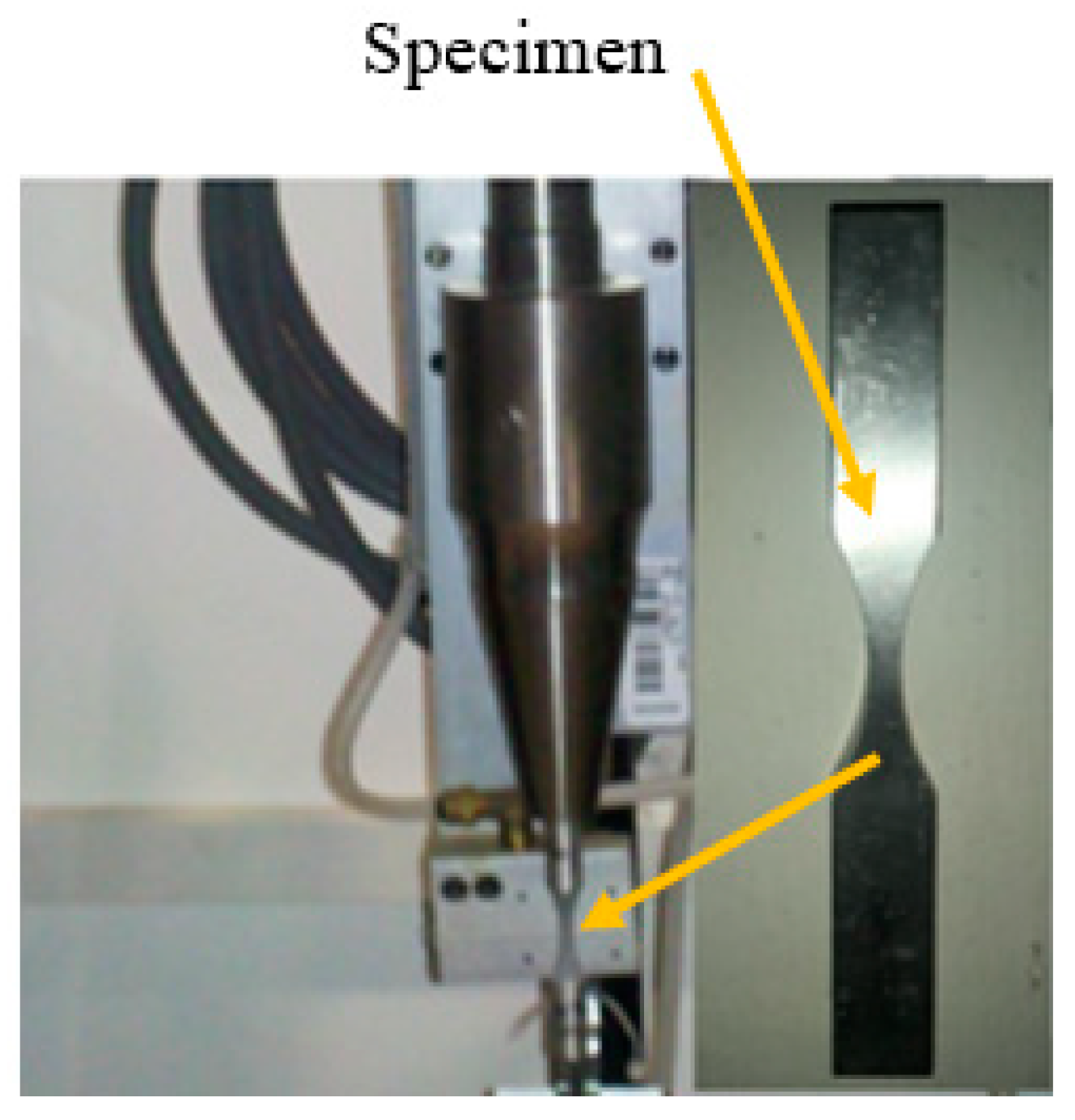
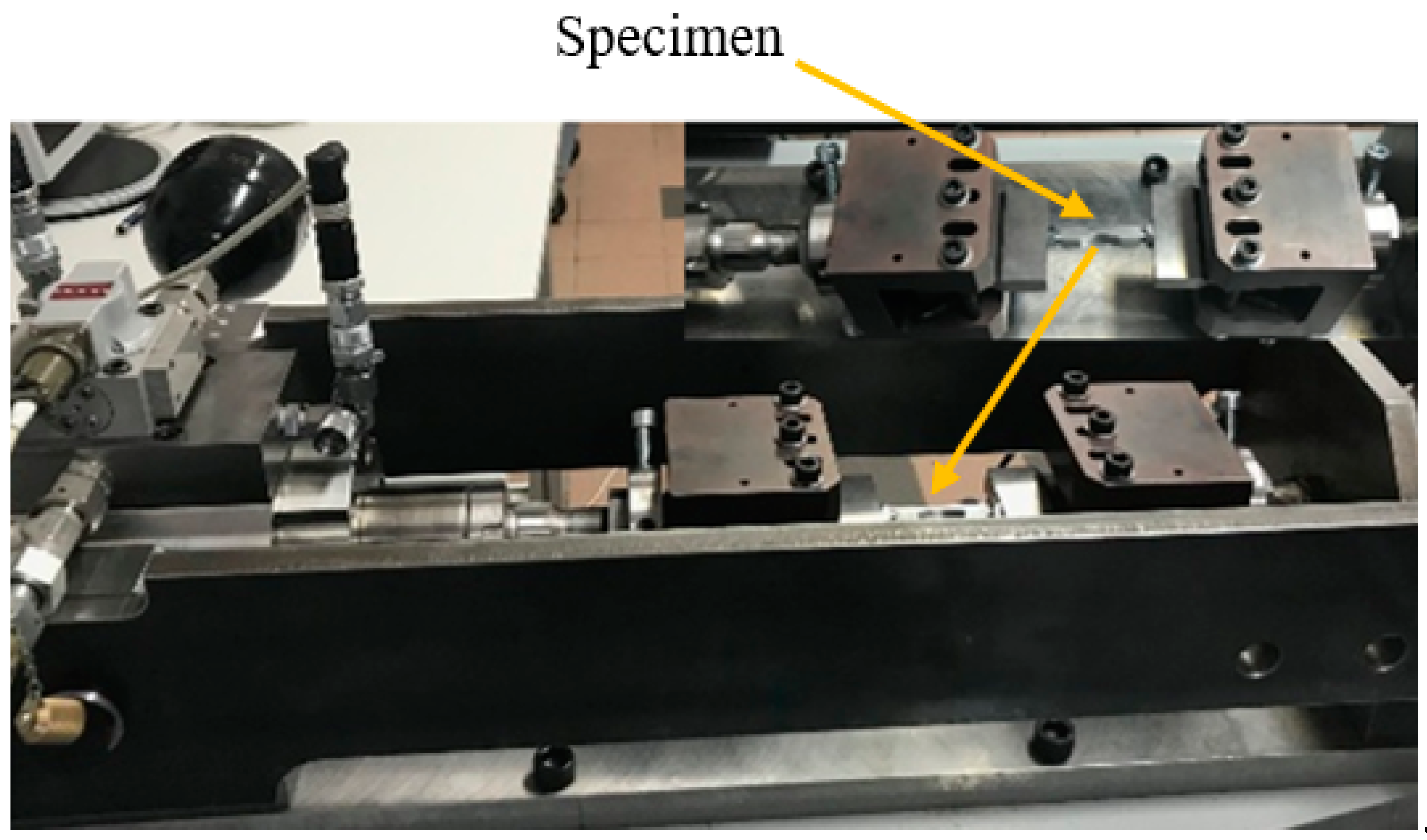


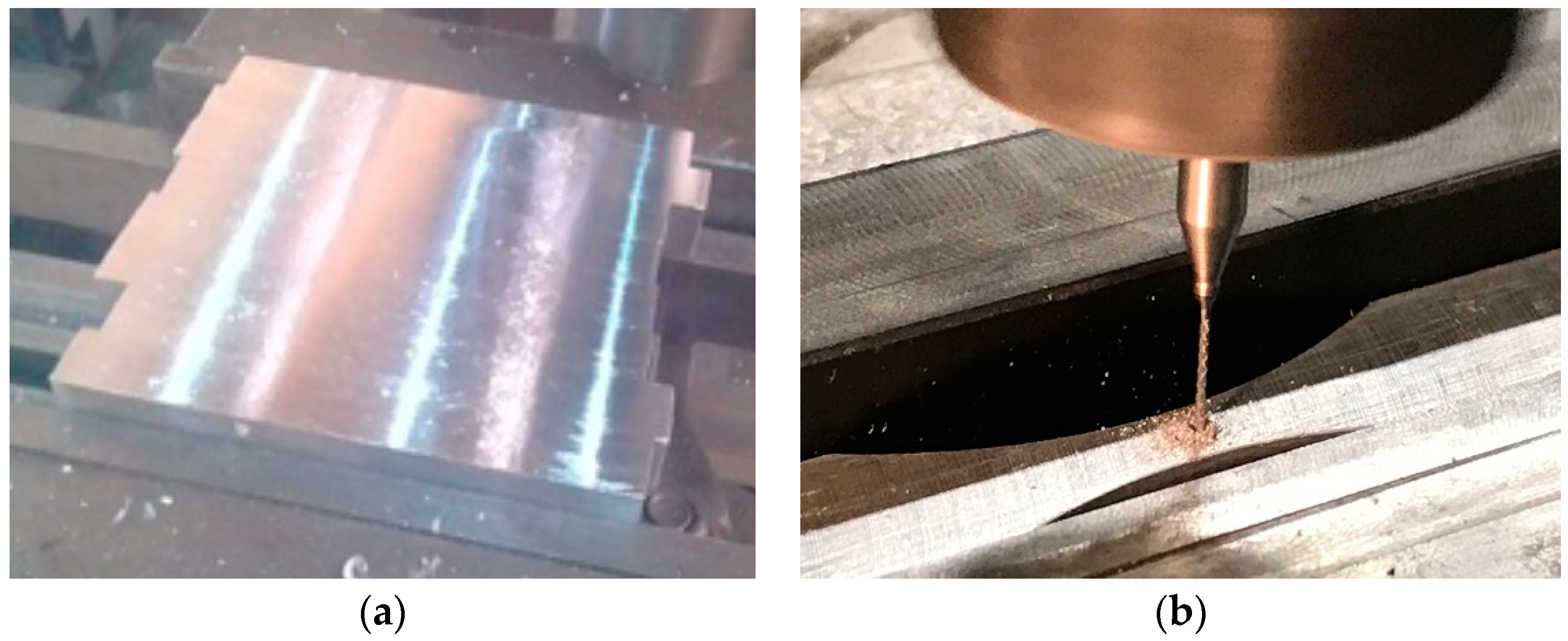
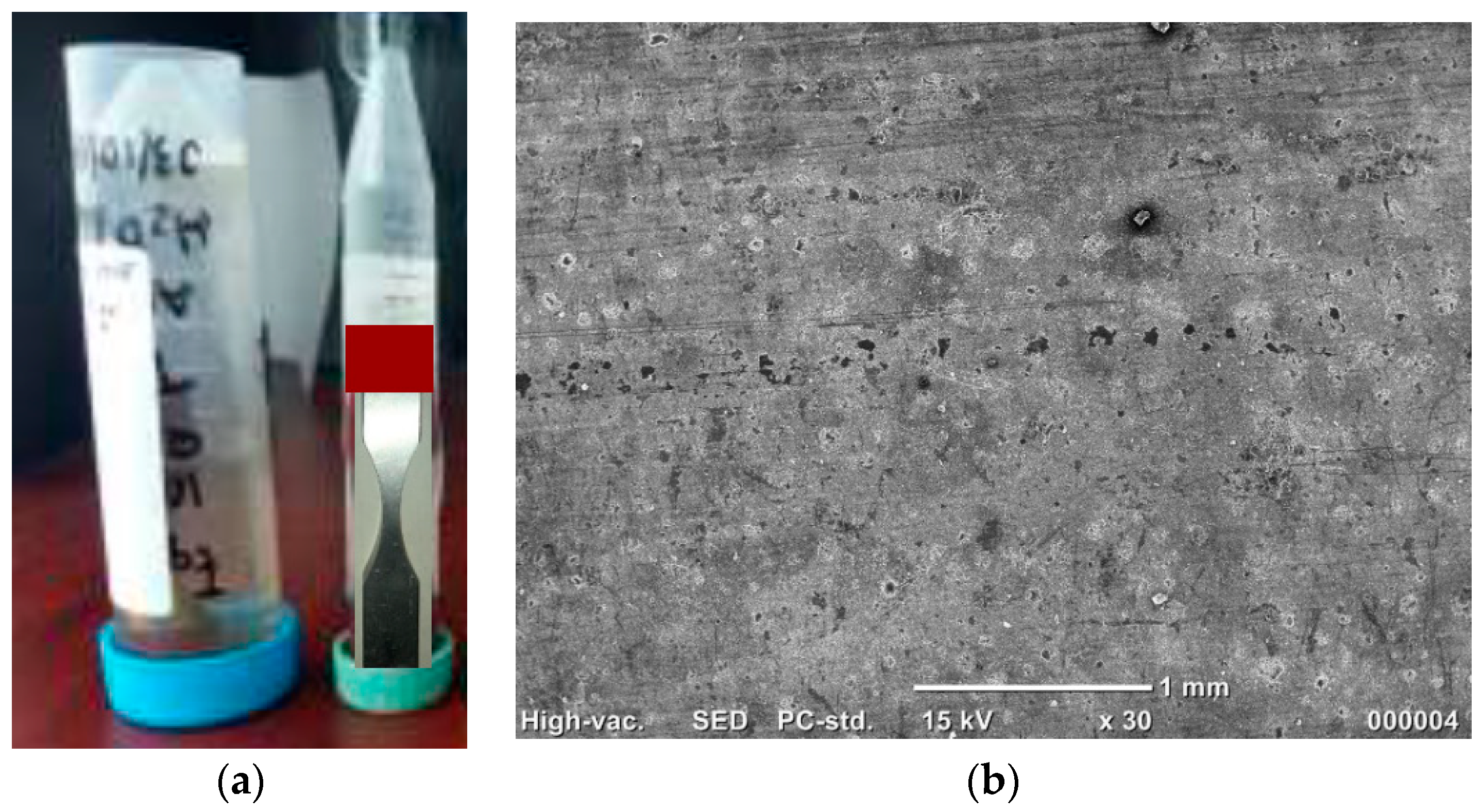
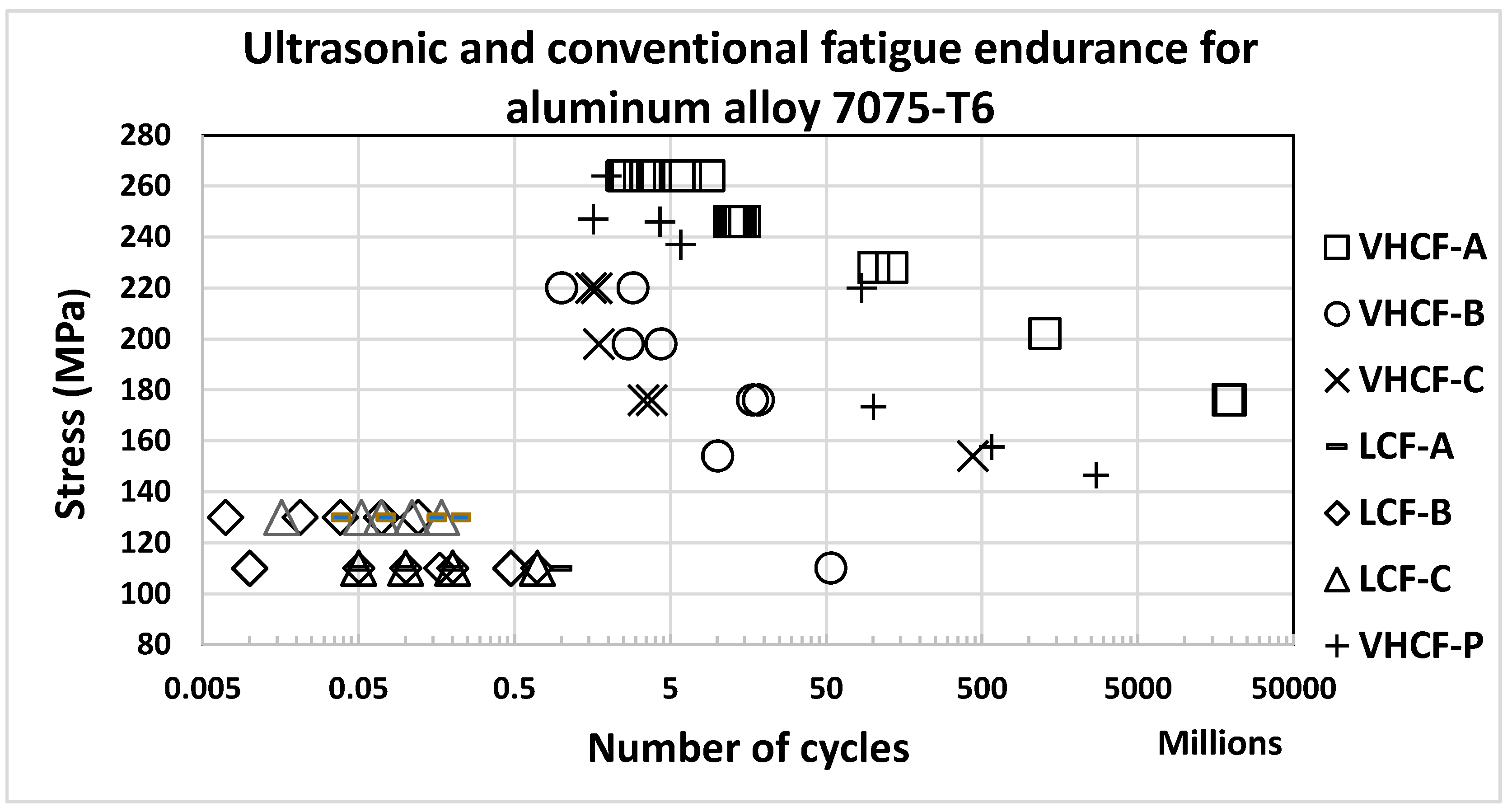

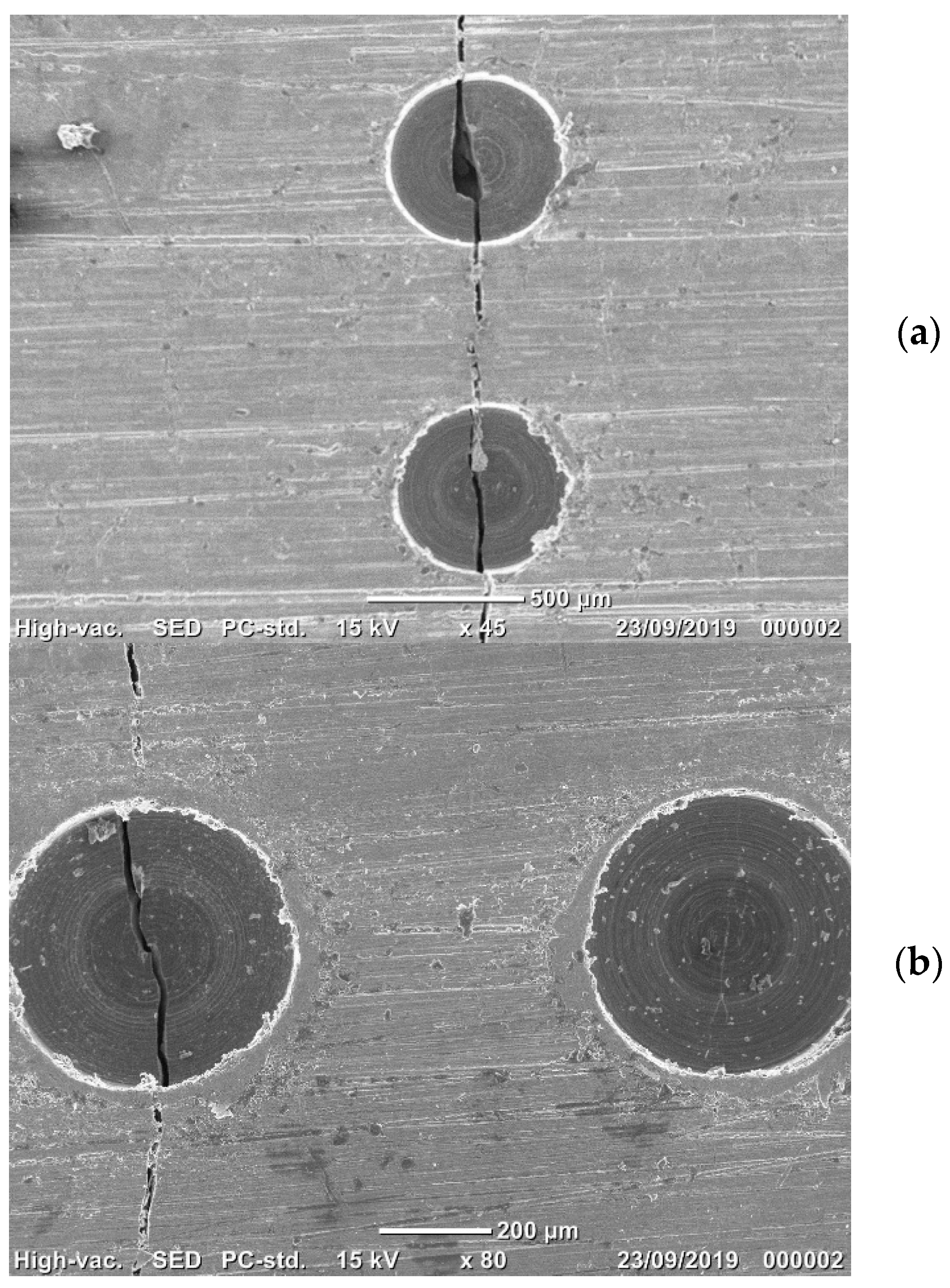
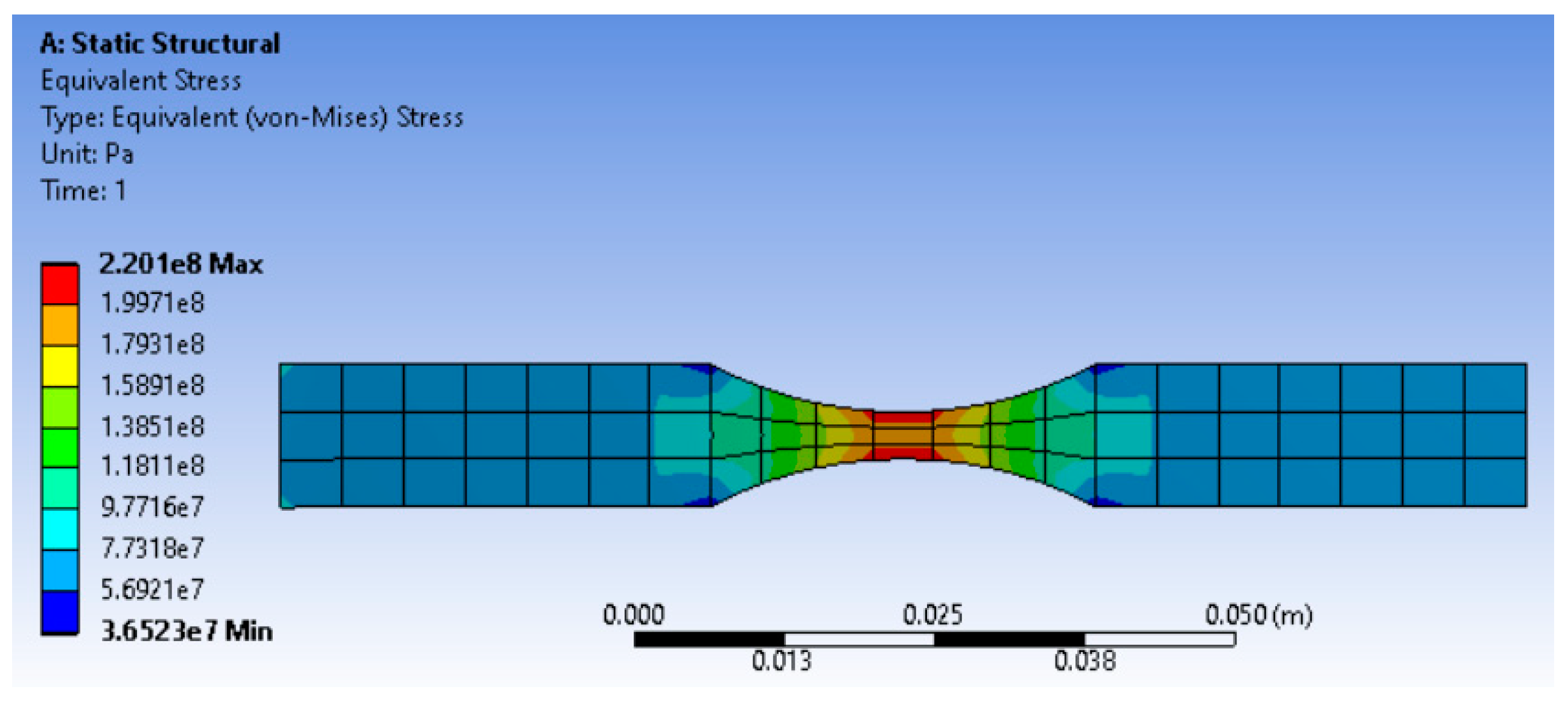
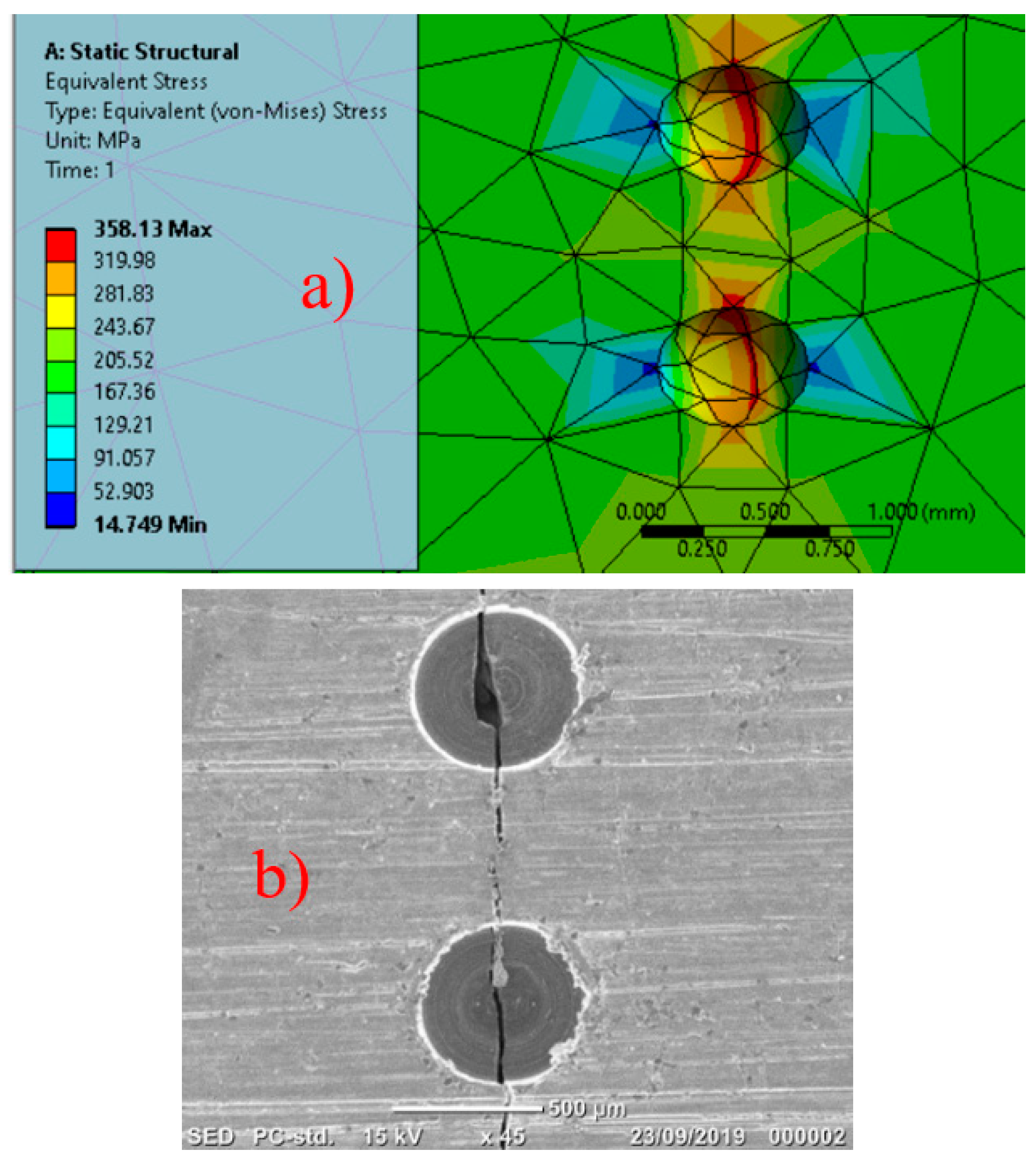
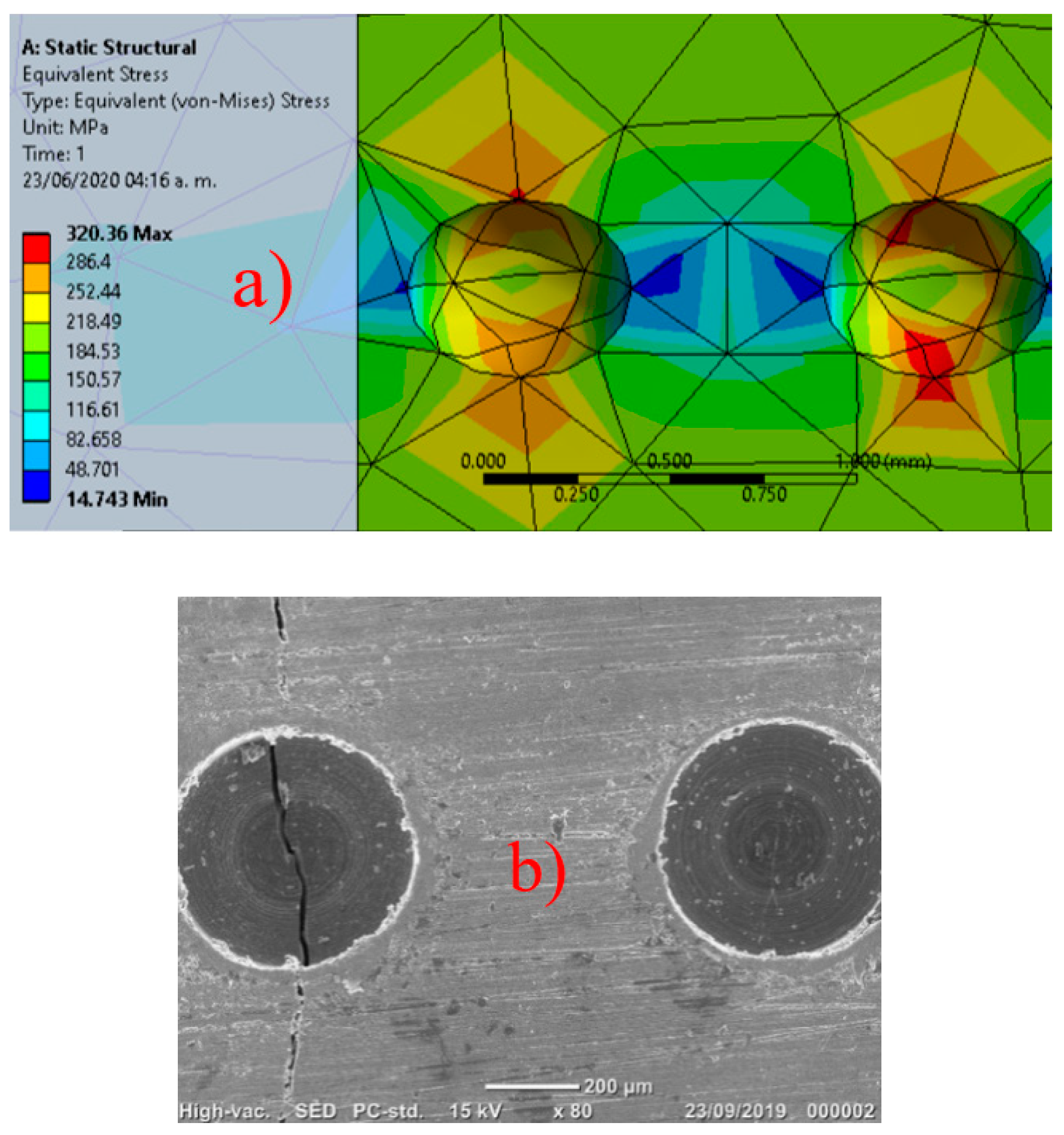
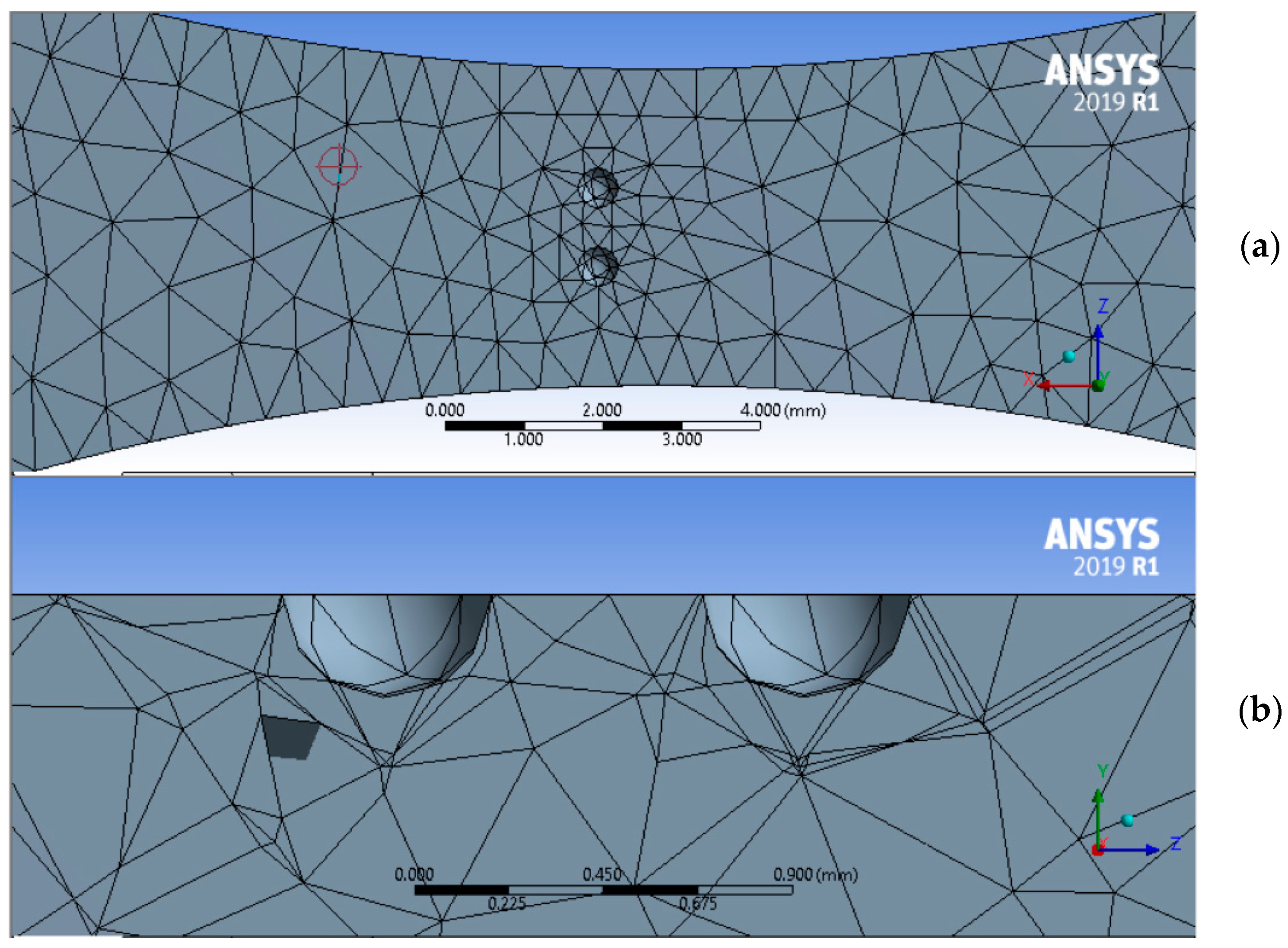
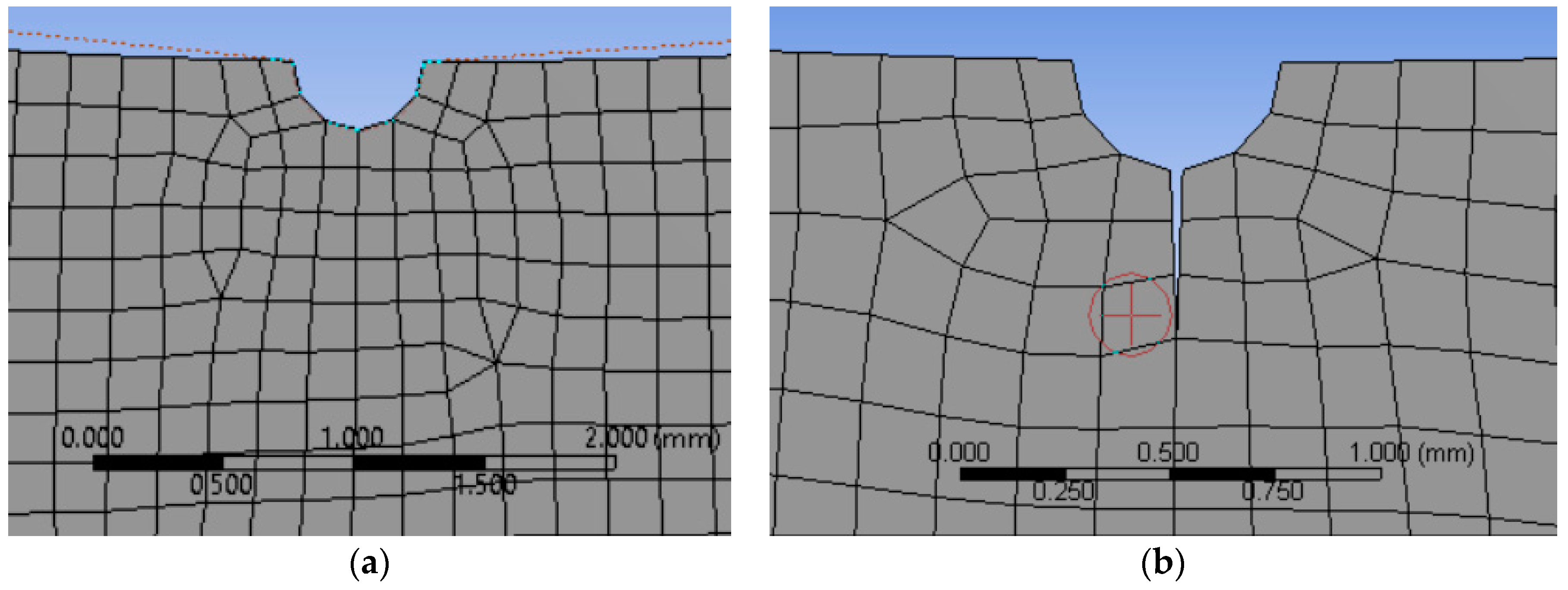
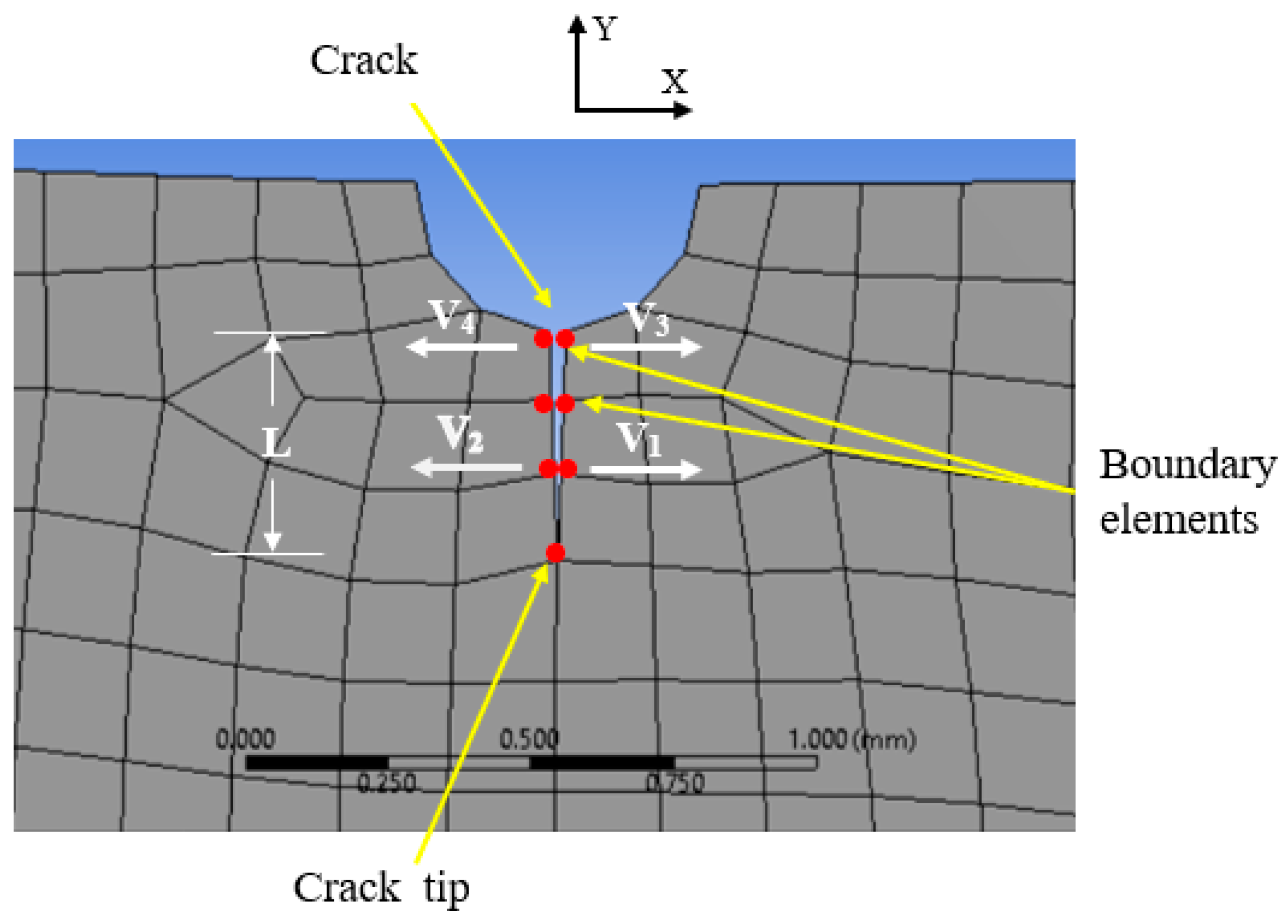

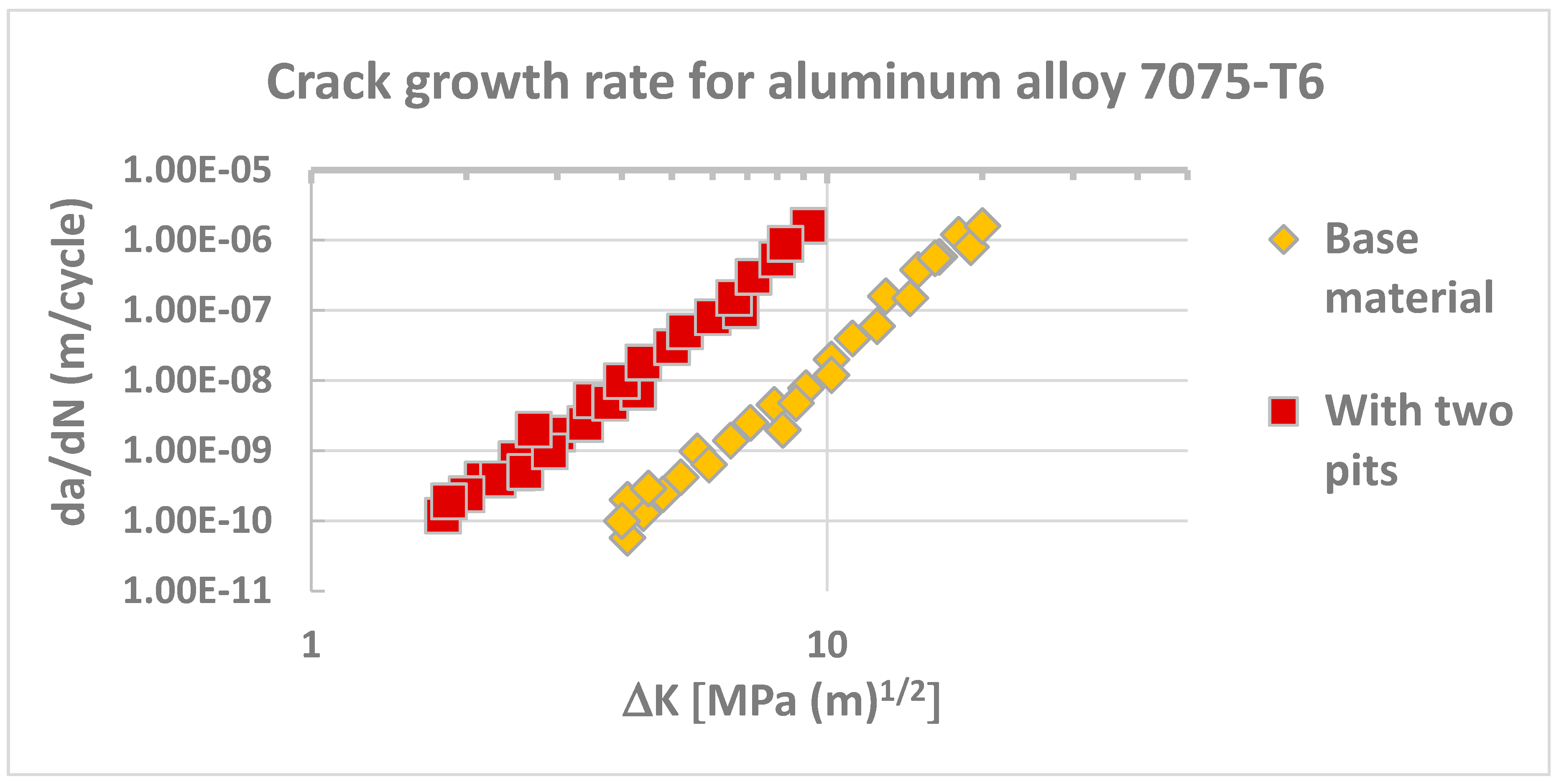
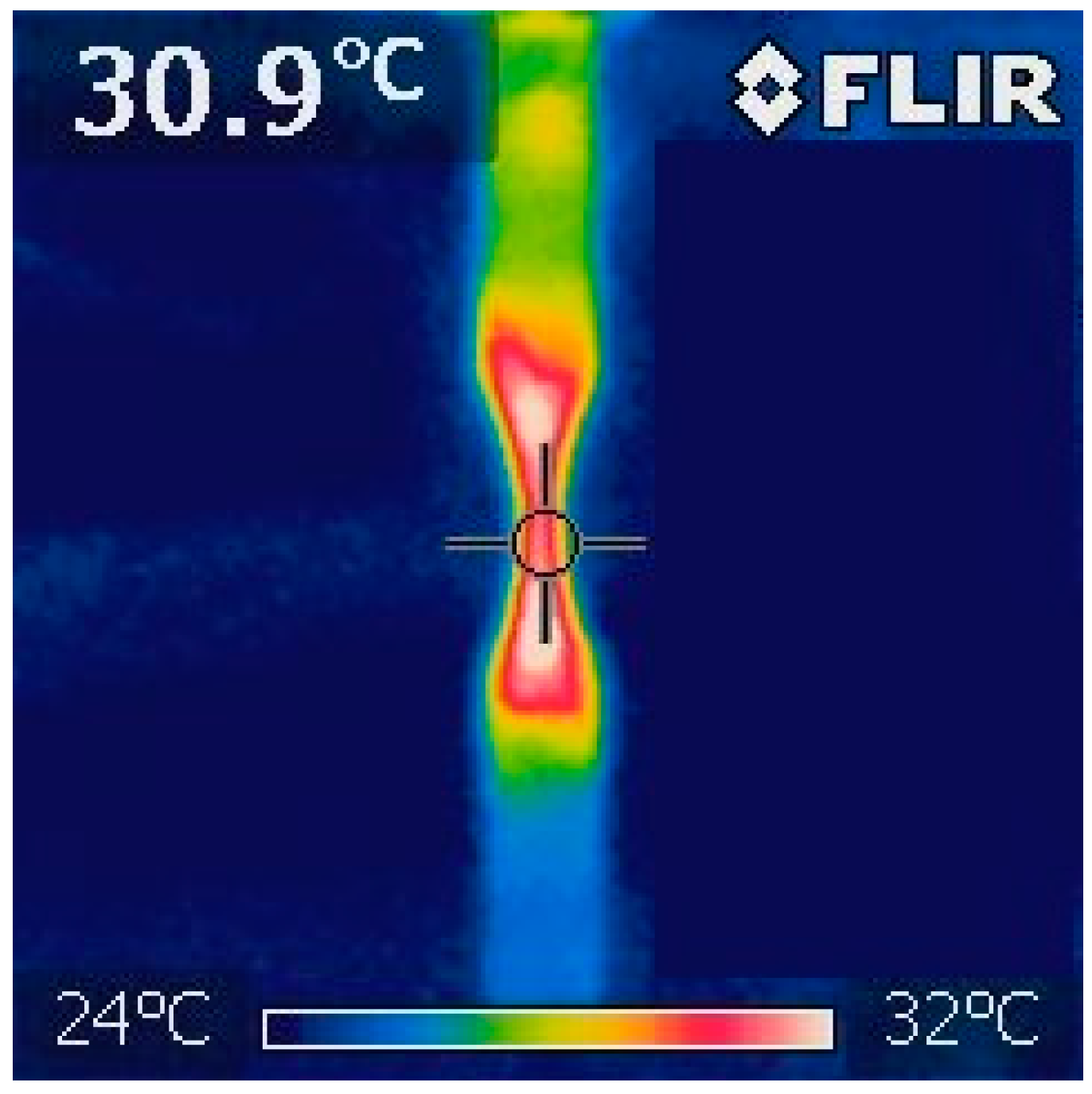
| Zn. | Mg | Cu | Cr | Fe | Al |
|---|---|---|---|---|---|
| 6.9 Max. | 2.7 Max. | 1.87 Max. | 0.2 Max. | 0.4 Max. | Balance |
| Density | Hardness | σy | σu | Poisson Ratio | Elastic Modulus |
|---|---|---|---|---|---|
| (kg/m3) 2800 | (HV0.1) 155.12 | (MPa) 453 | (MPa) 538 | (–) 0.33 | (GPa) 70 |
| # | NT | NF | Fmax (KN) | σmax (MPa) | R | f (Hz) | Ra Localization (a) (μm) | Ra Localization (b) (μm) | Ra Localization (c) (μm) | Ra Localization (d) (μm) |
|---|---|---|---|---|---|---|---|---|---|---|
| A1 | 107 | 382,956 | 4.86 | 110 | 0.1 | 20 | * 0.179 | 0.252 | 0.225 | 0.705 |
| ** 0.144 | 0.358 | 0.292 | 0.230 | |||||||
| A2 | 50,000 | 50,000 | 4.75 | 110 | 0.1 | 20 | * 0.141 | 0.409 | 0.322 | 0.643 |
| A3 | 107 | 460,002 | 4.39 | 110 | 0.1 | 20 | * 0.127 | 0.381 | 0.223 | 0.578 |
| ** 0.125 | 0.244 | 0.220 | 0.558 | |||||||
| A4 | 107 | 354,215 | 3.49 | 110 | 0.1 | 20 | * 0.17 | 0.323 | 0.193 | 0.871 |
| ** 0.176 | 0.298 | 0.224 | 0.548 | |||||||
| A5 | 107 | 107 | 2.31 | 110 | 0.1 | 20 | * 0.103 | 0.556 | 0.197 | 0.747 |
| ** 0.09 | 0.283 | 0.182 | 0.660 | |||||||
| A6 | 105 | 105 | 2.25 | 110 | 0.1 | 20 | * 0.105 | 0.48 | 0.145 | 0.253 |
| ** 0.113 | 0.441 | 0.158 | 0.606 | |||||||
| A7 | 200,000 | 200,000 | 2.34 | 110 | 0.1 | 20 | * 0.128 | 0.379 | 0.138 | 0.590 |
| ** 0.104 | 0.258 | 0.185 | 0.575 | |||||||
| A8 | 107 | 107 | 2.27 | 110 | 0.10 | 20 | * 0.11 | 0.628 | 0.164 | 0.619 |
| ** 0.103 | 0.331 | 0.158 | 0.590 | |||||||
| B1 | 106 | 692,023 | 4.24 | 110 | 0.1 | 20 | * 0.31 | 0.538 | 0.4 | 0.731 |
| ** 0.271 | 0.375 | 0.755 | 0.999 | |||||||
| B2 | 104 | 104 | 4.88 | 110 | 0.1 | 20 | * 0.794 | 0.663 | 0.547 | 0.487 |
| B3 | 107 | 107 | 2.29 | 110 | 0.10 | 20 | * 0.166 | 0.518 | 0.386 | 0.830 |
| ** 0.113 | 0.423 | 0.467 | 0.963 | |||||||
| B4 | 107 | 165,047 | 3.38 | 110 | 0.1 | 20 | * 0.228 | 0.467 | 0.403 | 0.866 |
| ** 0.145 | 0.393 | 0.342 | 0.885 | |||||||
| B5 | 50,000 | 50,000 | 2.31 | 110 | 0.1 | 20 | * 0.128 | 0.409 | 0.25 | 0.55 |
| ** 0.103 | 0.447 | 0.219 | 0.623 | |||||||
| B6 | 105 | 105 | 2.29 | 110 | 0.10 | 20 | * 0.119 | 0.599 | 0.18 | 0.633 |
| ** 0.125 | 0.450 | 0.189 | 0.654 | |||||||
| B7 | 200,000 | 200,000 | 2.33 | 110 | 0.1 | 20 | * 0.114 | 0.434 | 0.371 | 0.776 |
| ** 0.106 | 0.275 | 0.214 | 0.838 | |||||||
| C1 | 107 | 335,033 | 4.58 | 110 | 0.1 | 20 | * 0.244 | 0.586 | 0.382 | 0.98 |
| ** 0.159 | 0.596 | 0.395 | 1.091 | |||||||
| C3 | 107 | 107 | 2.28 | 110 | 0.10 | 20 | * 0.163 | 0.483 | 0.336 | 0.912 |
| ** 0.149 | 0.288 | 0.278 | 0.530 | |||||||
| C4 | 700,000 | 700,000 | 2.29 | 110 | 0.1 | 20 | * 0.166 | 0.643 | 0.265 | 0.812 |
| ** 0.17 | 0.486 | 0.273 | 0.909 | |||||||
| C5 | 50,000 | 50,000 | 2.22 | 110 | 0.1 | 20 | * 0.168 | 0.580 | 0.383 | 0.877 |
| ** 0.127 | 0.450 | 0.339 | 0.672 | |||||||
| C6 | 105 | 105 | 2.29 | 110 | 0.10 | 20 | * 0.155 | 0.538 | 0.279 | 0.709 |
| ** 0.19 | 0.461 | 0.265 | 0.657 | |||||||
| C7 | 200,000 | 200,000 | 2.32 | 110 | 0.10 | 20 | * 0.167 | 0.582 | 0.248 | 0.712 |
| ** 0.14 | 0.286 | 0.282 | 0.715 |
© 2020 by the authors. Licensee MDPI, Basel, Switzerland. This article is an open access article distributed under the terms and conditions of the Creative Commons Attribution (CC BY) license (http://creativecommons.org/licenses/by/4.0/).
Share and Cite
Zuñiga Tello, I.F.; Milković, M.; Domínguez Almaraz, G.M.; Gubeljak, N. Ultrasonic and Conventional Fatigue Endurance of Aeronautical Aluminum Alloy 7075-T6, with Artificial and Induced Pre-Corrosion. Metals 2020, 10, 1033. https://doi.org/10.3390/met10081033
Zuñiga Tello IF, Milković M, Domínguez Almaraz GM, Gubeljak N. Ultrasonic and Conventional Fatigue Endurance of Aeronautical Aluminum Alloy 7075-T6, with Artificial and Induced Pre-Corrosion. Metals. 2020; 10(8):1033. https://doi.org/10.3390/met10081033
Chicago/Turabian StyleZuñiga Tello, Ishvari F., Marijana Milković, Gonzalo M. Domínguez Almaraz, and Nenad Gubeljak. 2020. "Ultrasonic and Conventional Fatigue Endurance of Aeronautical Aluminum Alloy 7075-T6, with Artificial and Induced Pre-Corrosion" Metals 10, no. 8: 1033. https://doi.org/10.3390/met10081033
APA StyleZuñiga Tello, I. F., Milković, M., Domínguez Almaraz, G. M., & Gubeljak, N. (2020). Ultrasonic and Conventional Fatigue Endurance of Aeronautical Aluminum Alloy 7075-T6, with Artificial and Induced Pre-Corrosion. Metals, 10(8), 1033. https://doi.org/10.3390/met10081033






